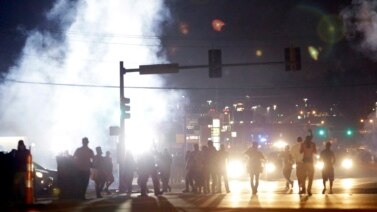
Hello, and welcome to the Monday edition of As It Is, our daily show for people learning everyday American English.
I’m Christopher Cruise in Washington.
Today on the program, we talk with a scientist who is working to help weather experts improve their tornado predictions.
“I’m seeing it through computers and through the radar screens, which are making three-dimensional images of the wind and the debris and the hail, flowing around the storm.”
And we’ll take you back to the day in 1812 when a famous American ship got its nickname...
(SOUND)
But first, we tell you about a disputed project to build a large survival shelter in case disaster strikes the United States...
(MUSIC)
The World’s Biggest Private Survival Shelter?
For many years, the United States government has kept underground shelters for the president and other top officials in case of a major disaster or attack. But ordinary citizens do not have such a place to go to -- unless, of course, they build their own. One man has decided to do just that, but not only for himself. He is building a huge underground shelter that will hold thousands of people. Not everyone thinks that’s a good idea.
The VOA’s Mike Richman recently spoke with the man -- as well as his critics.
Robert Vicino thinks humans are living in what is sometimes called “the end times.” He believes that a natural or manmade disaster will soon make life on the surface of the Earth impossible.
His company -- called “Vivos” -- is building what it says is the world’s largest private underground survival shelter.

Mr. Vicino says he felt the urge to build the shelter more than 30 years ago.
“Somehow, I had this inspiration that I needed to build a shelter deep underground for as many as 5,000 people for what is coming our way. And the key word there is ‘coming,’ and the question is ‘from where and what?’ I didn’t know the answer. I still don’t.”
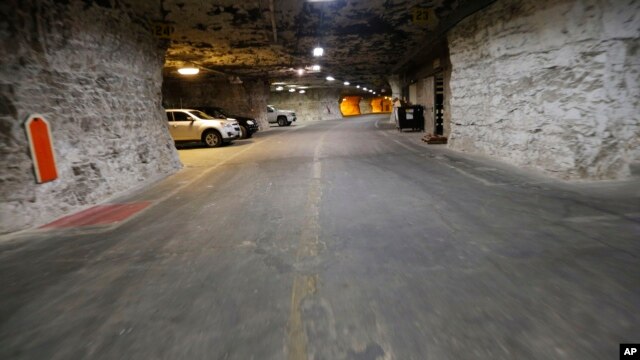
The shelter will be built in the mid-western American town of Atchison, Kansas, 40 meters below a limestone mountain, in a place that was once used by the Army to store weapons.
Only people who pay the one-time cost of $20,000 can use it. Anyone in the world can join.
Paul Seyfried is an adviser to a group called the American Civil Defense Association. It tries to prepare the public for manmade and natural disasters. Mr. Seyfried wonders if the Vivos shelter could operate if a disaster hits.
“My only reservation I would have is who is going to be in charge of law enforcement and then when you put 1,500 or 1,600 people together from all these different backgrounds with varying amounts of food and other support -- I’m just trying to get my mind around all the problems they’re going to have with that.”
Jacque Pregont is president of the Atchison Chamber of Commerce, a business group. The organization hopes the shelter will bring in travelers who will spend money and improve the town’s economy -- disaster or not.
“I would hope that they are going to end up coming here and spending some time here and not just waiting for a catastrophic event.”
I’m Mike Richman.
(MUSIC)
Getting Close to Tornadoes
Weather experts are able to predict bad weather better than ever before thanks to satellites, high-altitude balloons and radar stations. But for many years these experts have incorrectly predicted tornado formation, giving false warnings about 75 percent of the time.
So, scientists are working to improve their tornado predictions. They are getting close to the large and dangerous wind storms to see how they form.
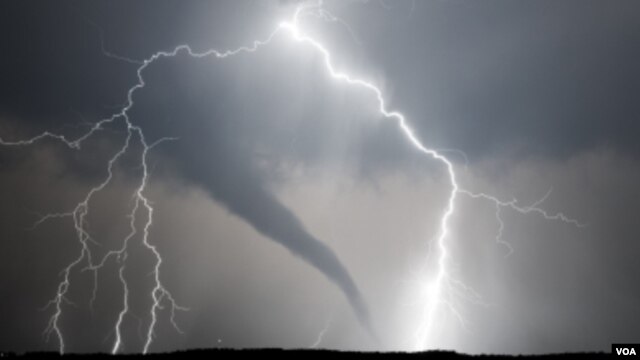
They believe that, if they know what a tornado looks like as it forms, they will lower their false prediction rate.
Jerilyn Watson reports.
Doppler is a type of radar that identifies weather conditions based on the flow and speed of objects through the air.
Scientist Joshua Wurman was the first to put Doppler radar equipment on a vehicle and drive it into the path of a tornado.
“I invented the Doppler on Wheels back in the 1990s because I was frustrated that we couldn’t see enough detail inside tornados and hurricanes. We had blurry images of all these things, and in order to really understand the physics -- the math of what’s going on inside a tornado, how exactly are they forming, how strong are the winds right at the surface -- we need to get up very, very, close.”
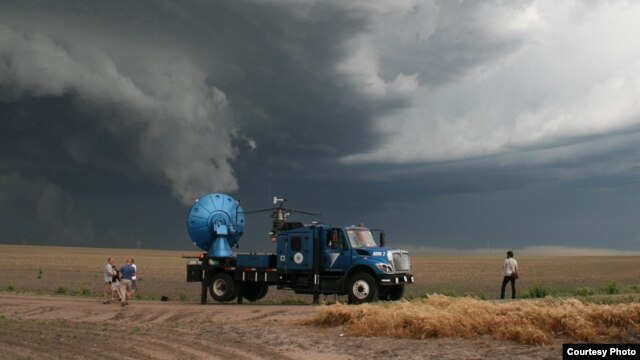
Mr. Wurman heads the Center for Severe Weather Research in Boulder, a city in the western state of Colorado. He has put his Doppler radar equipment on large trucks. Mr. Wurman and his colleagues sit inside the truck and study the computer images formed by the signals that return.
“I’m seeing it through the computers and through the radar screens, which are making three-dimensional images of the wind and the debris and the rain and hail flowing around the storm.”
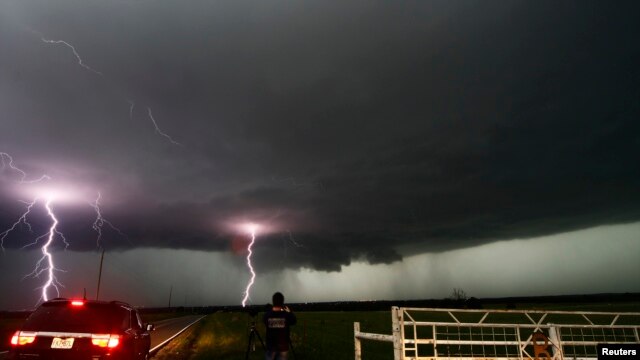
Using information from satellites, stationary radar networks, and computer models, the team finds a storm that could become a tornado and drives the truck right into that area. Doppler on Wheels has been close to over 200 tornados so far. Information gathered by the instruments could help builders design stronger homes in areas where such dangerous storms are common.
Scientists are learning more about which storms develop into tornados by studying them from start to end. Mr. Wurman says that radar information has taught them that a “wind surge” could be what causes a storm to turn into a tornado.
“The scientific process is that we need to now observe that and repeat that observation in maybe a dozen or more other thunderstorms, and in maybe a dozen or more thunderstorms that aren’t making tornados, to really see if that surge causes tornados and if there is no surge, whether there is no tornado.”
I’m Jerilyn Watson.
(MUSIC)
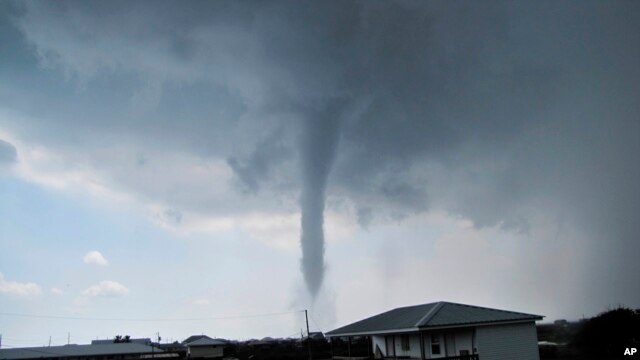
Old Ironsides
201 years ago today the 40-gun American Navy ship, the U.S.S. Constitution, got its nickname “Old Ironsides.” The name is linked to a battle between the Constitution and the British ship H.M.S. Guerriere during the War of 1812. The traditional naval story says a Constitution crew member watched a British cannonball hit the Constitution. The missile apparently did no damage to the wooden ship’s oak hull. The crew member reportedly said “Hooray, her sides are like iron!” And the nickname was born.
The Constitution won that battle and served through the war. It later became a training ship. It was scheduled to be destroyed in 1830. But many Americans opposed the idea.
One of them was the poet Oliver Wendell Holmes. He was the father of the future Supreme Court justice of the same name. He wrote a sad and angry poem to protest the planned destruction of the ship. He called his poem, not surprisingly, “Old Ironsides.”
The ship was saved -- mostly because of the poem -- but its condition worsened over the next century. In 1925, a national fund-raising campaign paid for a badly-needed restoration.
The U.S.S. Constitution is now a national historic monument. “Old Ironsides” rests at the Boston Navy Yard in Massachusetts.
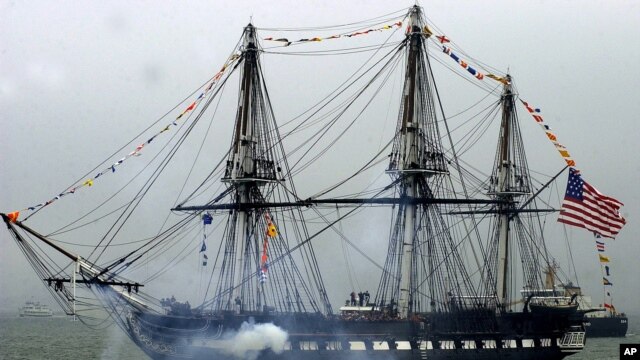
I’m Christopher Cruise. From all of us at The Voice of America, thanks for listening today, and we’ll see you tomorrow!
Original reporting by Mike Richman and Rosanne Skirble

